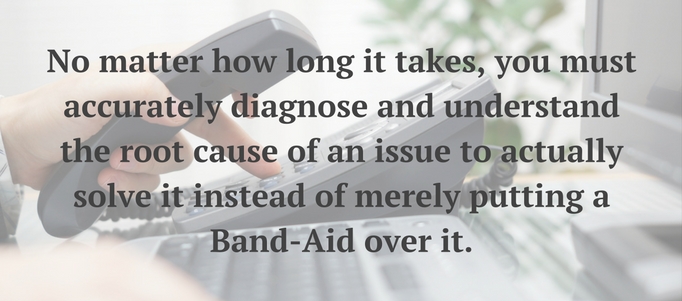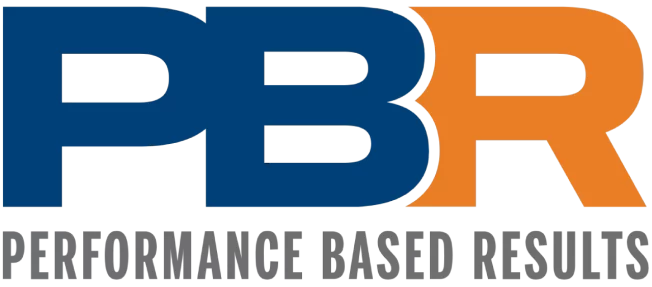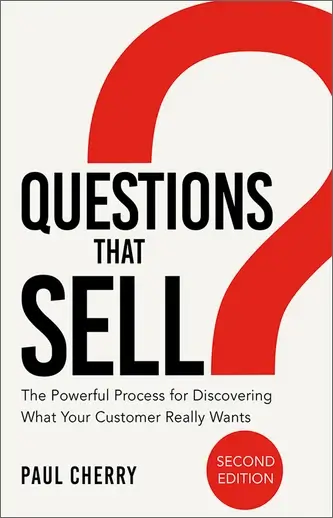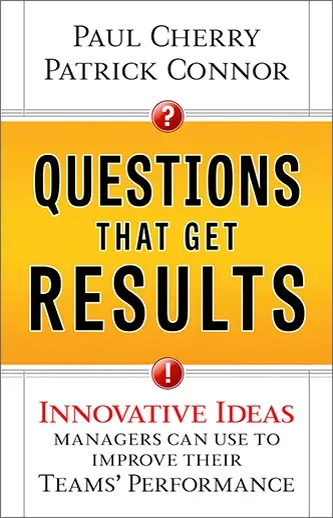In today’s competitive market, understanding how to qualify a sales opportunity is crucial for maximizing sales potential and achieving sustainable growth.
A sales opportunity represents a potential sale to a qualified lead, and being able to identify and nurture these opportunities can significantly impact your bottom line.
To qualify for a sales opportunity, you need to assess various factors such as the fit with your ideal customer profile, buying signals, timing, and urgency.
By evaluating these aspects, you can prioritize efforts on leads most likely to convert. Keep reading to uncover essential strategies and criteria for effectively qualifying sales opportunities to drive performance and increase sales revenue.
Approximately 67 percent of lost sales occur because salespeople don’t qualify their prospects sufficiently before they launch into the sales process. Why would you jeopardize any sales opportunity, let alone a significant percentage of them, by not adequately qualifying your leads?

How Do I Qualify?
Effectively qualifying a sales opportunity is essential to maximize your efforts and resources. To qualify for a sales opportunity, you must first understand your ideal customer profile, analyze buying signals, and identify the timing and urgency of the opportunity.
This structured approach ensures that you engage with prospects who not only need your solutions but are also ready and willing to invest in them.
Furthermore, it’s crucial to consider specific criteria such as the prospect’s budget, decision-making process, and potential challenges.
By addressing these aspects, you turn sales opportunities into successful deals, consequently increasing your sales performance and driving higher revenue.
So, how do you differentiate between a sales lead, a prospect, and a sales opportunity? Let’s explore this in detail.
What is a sales lead?
A sales lead is an individual or organization showing interest in your products or services but has yet to be qualified. In the sales opportunity stages, sales leads are the initial contacts gained through various methods like marketing campaigns, referrals, or networking.
They are the first step in sales opportunity management, serving as potential clients who have shown some level of engagement.
The definition of Sales opportunity clarifies that leads are crucial for building a robust sales pipeline.
By nurturing these leads through follow-ups and information sharing, you can convert them into prospects and, eventually, into qualified opportunities. Hence, managing sales leads effectively ensures a consistent and healthy flow of future sales opportunities.
What is a prospect?
A prospect is a potential customer who has shown interest in your product or service but has not yet engaged in the buying process. Identifying prospects is crucial in the sales journey, as they represent individuals or businesses that align with your target market.
Specifically, a prospect has expressed a need or challenge that your offerings can solve, making them a valuable lead to nurture. It’s important to note that not all prospects will convert into these opportunities.
Therefore, evaluating their fit with your ideal customer profile is essential. For example, a CEO searching for ways to increase sales and motivate their team might be a strong prospect if they meet your demographic criteria and show genuine interest in your solutions.
What is a sales opportunity?
A sales opportunity is a potential sale identified within the sales funnel that shows a significant likelihood of converting into a profitable deal.
It emerges when a qualified lead exhibits clear buying signals aligning with your Ideal Customer Profile (ICP). Consequently, these opportunities require more focused and personalized engagement strategies to close the deal.
For business-to-business (B2B) environments, such as those targeting Presidents, CEOs, and Sales Managers, identifying this opportunity involves thorough evaluation and deep understanding of the prospect’s needs and pain points, such as lost sales revenue or missed targets.
In short, recognizing and nurturing a sales opportunity is paramount for increasing sales, achieving targets, and boosting overall productivity.
Getting Started: Our Roadmap to Success
It’s only natural for every roadmap to have a beginning, several middle points, and an ending. Our roadmap features six key points that are definitely worth understanding and mastering.
If you’re skeptical about learning something new from our roadmap, consider that nearly 70 percent of lost sales happen because salespeople don’t adequately qualify their leads.
With that in mind, can you really afford to miss out on learning how to develop a list of consultative sales questions that could lead to more closed deals?
Here are the six points included in our comprehensive roadmap:
Identify If There is a Problem
When talking to a prospect, ask about their concerns, frustrations, and obstacles. As a salesperson, it’s your job to identify the issues they’re facing. Sometimes, you need to approach the conversation like peeling an onion removing figurative layers until your lead is ready to articulate their main issue. Other times, prospects may openly share their problems.
When a prospect shares their frustration or problem, theyre showing a level of trust in you. Theyre spending valuable time confiding in you, creating an opportunity for you to build a genuine relationship.
If you sense a prospect is open to establishing a relationship, don’t rush or force it. Just like your lasting relationships outside the office, meaningful connections with prospects and leads that turn into clients take time to develop.
Identify the Cause of the Problem

It’s rare that a problem and its cause are the same, which means nearly every problem has a distinct cause.
Despite this, salespeople often rush to present a proposal or quote without thoroughly identifying and understanding the problem, thinking it will speed up the process of a signed contract. In reality, this haste costs them opportunities and alienates prospects.
Before presenting a suitable solution, you need to build a history of the problem to grasp it fully.
You must recognize the factors at play and be responsible for the issue. No matter how long it takes, you must accurately diagnose and understand the root cause to truly solve it, rather than just putting a Band-Aid on it.
Identify the People Affected by the Problem
After identifying the root cause(s) of an issue, the next step is to determine who is most impacted by the problem.
By doing this, you pinpoint the individuals with the greatest vested interest in resolving the issue once and for all.
Finding out who’s affected involves more than just asking, Are you the decision-maker? You need to know everyone impacted by the problem and their thoughts and opinions about it.
By understanding the perspectives of all concerned parties, you’ll gain a comprehensive view. This understanding will enable you to position a solution that addresses the problem and secures buy-in from those affected.
Identify the Costs
As we mentioned earlier, prospects often get energized when discussing their problems. They usually describe their issues in vivid, subjective terms that paint a strong picture but don’t provide a clear idea of the problem’s cost.
It’s your job to validate a prospect’s issue by quantifying the cost. You need to bring concrete numbers into the conversation to help them understand the real cost of the problem.
Whether it’s lost production hours, reduced productivity, loss of market share, or missed opportunities, both you and your prospect need to grasp the true, ongoing costs of the problem.

Here are some examples of questions you should ask to uncover the real costs of a prospect’s problem:
- What do you think these problems are costing you?
- Based on the problem you’ve shared with me, what’s it costing you in terms of (productivity, performance, people, resources, opportunities, customers, revenue, market share, etc.)?
- How is this problem affecting the bottom line?
- How much (time, money, resources, people, customers, etc.) do you think you end up (spending, losing, wasting, investing) in dealing with this problem?
Understand Their Pain
When you understand a prospect’s sense of urgency, you’re better positioned to comprehend the pain they’re experiencing. If they want to resolve an issue immediately, that’s great for both of you. If they don’t have a timeline for implementing a solution, that’s not so good.
You need to find out why they’re hesitant. Do they have more pressing issues, are they overwhelmed, or is the problem just not that important to them?
You don’t want to present a quote unless your prospect is motivated to act, so assessing their urgency and evaluating the opportunity is crucial. Ask questions like, What if you continued to do exactly what you’ve been doing?
And If nothing changes, what consequences do you expect? Based on their responses, you’ll be able to determine if they’re ready to move forward now or if they’re content with remaining complacent.
Go for the Gain
Gain is the flip side of your prospect’s pain. When in pain, a prospect may cry, weep, or quickly seek a solution. When they experience gain, they are excited, happy, and full of dreams and hope.
If you haven’t pursued the prospect’s pain or if there’s little pain to uncover, focus on their gain.
You need to understand what the gain is for your prospects by exploring their desires, hopes, aspirations, wants, and needs for the future.
To uncover a person’s gain, ask them how they envision the future, what would happen if they eliminated their problem, and what it would mean to them personally if you could help them achieve the results you’ve discussed.
Remember, organizations themselves don’t buy — people make purchasing decisions on behalf of organizations.

Evaluating this opportunity
Evaluating this opportunity is crucial for business success.
By thoroughly assessing potential opportunities, companies can allocate resources more effectively and increase their chances of closing deals. Key elements include identifying target customers, understanding their pain points, and determining their buying intent.
A systematic evaluation helps prioritize efforts and optimize sales strategies, ensuring that your team focuses on high-value opportunities that align with your business goals.
Assessing Fit with Ideal Customer Profile
Determining if a sales opportunity aligns with the ideal customer profile (ICP) is paramount for effective lead qualification.
Firstly, identify the core characteristics of your ICP, such as industry, company size, sales cycle, and pain points. Next, assess whether the prospect shares these attributes.
For example, does the prospect operate within your target geographic regions like the U.S. or Canada? Moreover, evaluate their current sales challenges—are they struggling with lost sales revenue or ineffective selling performance?
In addition, consider if they have the authority or influence to make purchasing decisions.
By thoroughly assessing fit with your ideal customer profile, you can channel your efforts into opportunities most likely to convert, thereby optimizing sales efficiency and results.
Analyzing Buying Signals
Analyzing buying signals is crucial for accurately qualifying a sales opportunity. These signals, often subtle, indicate a prospect’s readiness to move forward in the sales process.
For example, positive buying signals include requests for more detailed information, inquiries about pricing, or questions about implementation timelines.
Conversely, a lack of engagement or delayed responses might indicate hesitancy or lower interest.
To effectively analyze these signals, it’s essential to closely observe both verbal cues and body language during interactions. Additionally, tracking digital engagement, such as email opens and website visits, provides further insights.
Staying attuned to these signals allows sales professionals to tailor their approach, address concerns promptly, and, ultimately, enhance the likelihood of closing the sale.
Identifying Timing and Urgency
Identifying timing and urgency is crucial in sales opportunity management since it can significantly impact the success of your sales efforts.
To begin with, understanding the timing involves pinpointing when the prospect is likely to make a purchase decision. This could be influenced by factors such as budget cycles, project deadlines, or market conditions.
For instance, a CEO may have a pressing need to increase sales before the end of the fiscal year.
On the other hand, urgency refers to how critical the solution is to the prospects immediate needs. Analyzing both elements helps in prioritizing sales opportunities and crafting a tailored approach.
Knowing the sales opportunity stages, from initial contact to closing, can help in effectively gauging and addressing the timing and urgency of each lead.
FAQ
What criteria should I consider when qualifying for a sales opportunity?
When qualifying a sales opportunity, it is imperative to consider specific criteria to ensure alignment with your objectives and maximize success rates.
Firstly, assess whether it fits with your ideal customer profile (ICP). This includes factors such as industry, company size, and decision-making authority.
Secondly, evaluate the buying signals—look for explicit interest, budget availability, and the potential for a reciprocal business relationship.
Thirdly, the timing and urgency must be identified; opportunities with pressing needs or deadlines often convert quickly. Moreover, scrutinize the prospect’s pain points and challenges to determine if your solutions directly address their issues.
Lastly, review the competitive landscape to understand your positioning and potential obstacles.
By prioritizing these criteria, you ensure that your efforts are focused on the most promising sales opportunities, thereby increasing your likelihood of closing deals and enhancing overall sales performance.
How do I differentiate between a sales lead, a prospect, and a sales opportunity?
Differentiating between a sales lead, a prospect, and a sales opportunity is crucial for effective sales strategy.
A sales lead is an individual or organization that has shown interest in your product or service but hasn’t yet been qualified. Leads typically come from marketing efforts like online ads, webinars, or trade shows.
A prospect, on the other hand, has been vetted and matches your Ideal Customer Profile (ICP). They demonstrate a higher level of interest and fit your demographic and behavioral criteria.
Lastly, a sales opportunity emerges when a prospect exhibits strong buying signals, indicating a willingness to engage further in the sales process.
Opportunities are often marked by discussions about the budget, decision-making timelines, and specific needs. Recognizing these distinctions helps tailor your sales approach, ensuring that your efforts are directed toward those most likely to convert.
What are the common challenges in qualifying sales opportunities, and how can they be overcome?
Qualifying sales opportunities can be complex often fraught with challenges. One common challenge is discerning true buying signals from mere interest. This can lead to wasted effort on leads that don’t convert.
To overcome this, focus on behavioral buying signals like engagement with multiple touchpoints or specific product inquiries. Another challenge is misalignment with the ideal customer profile.
Without thorough research, you may target businesses that lack the need or budget for your solution.
To address this, refine your ideal customer profile regularly. Additionally, timing and urgency can be problematic; prospects might show interest but have no immediate need. Overcome this by asking probing questions to uncover underlying motivations and timelines.
Lastly, qualifying decisions might lack consistency. Implement a standard qualification framework to ensure uniformity across your sales team. These strategies will help qualify sales opportunities better and drive success.
Wrap up
In conclusion, qualifying a sales opportunity is essential for maximizing your sales team’s efficiency and driving revenue growth.
By meticulously evaluating sales opportunities, assessing fit with your ideal customer profile, and analyzing buying signals, you can ensure that your sales efforts are well-directed.
Moreover, identifying the right timing and urgency and understanding how to differentiate between sales leads, prospects, and genuine sales opportunities will help you prioritize effectively.
Although common challenges exist, such as misalignment and miscommunication, they can be overcome with structured methodologies and expert guidance.
Embrace these strategies to transform your sales process and achieve unparalleled success.
Remember, a well-qualified sales opportunity is a stepping stone to consistent sales growth and market leadership.
Leave a Reply
We value your input and questions about qualifying sales opportunities. Your feedback is instrumental in shaping the solutions we offer to effectively address your sales challenges.
Whether you are curious about advanced sales questioning techniques, identifying a profitable sales opportunity, or overcoming common hurdles in the sales process, we are here to assist you.
Moreover, by leaving a reply, you contribute to a community of professionals committed to driving sales excellence.
Have a specific query or a success story to share? Please leave your reply below, and one of our experts will get back to you promptly. Lets engage, learn, and grow together in mastering the art of qualifying sales opportunities.
And what about learning more about sales management training and spin questions? Go ahead!






